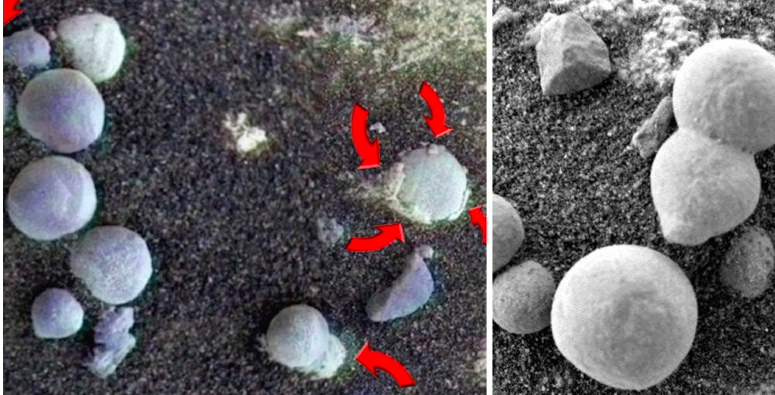A new study published in the Journal of Astrobiology and Space Science has hinted at the existence of alien life forms on the Red Planet.
The study, which references images taken by NASA’s Curiosity Rover points towards what appears to be fungi and algae on Mars.
NASA has still not admitted nor denied the conclusions that scientists made in the study, but nonetheless, a number of scientists believe that the report is the ultimate, and indisputable evidence of alien life on Mars.
However, it’s noteworthy to mention that the study makes reference to very primitive life, and not evolved life forms, so don’t expect little Martians walking around the surface of the red planet.
The study indicates the presence of simple living beings like fungi and algae.

“Four independent investigators have reported what appears to be fungi and lichens on the Martian surface, whereas a fifth investigator reported what may be cyanobacteria. In another study, a statistically significant majority of 70 experts, after examining Martian specimens photographed by NASA, identified and agreed fungi, basidiomycota (“puffballs”), and lichens may have colonized Mars. Fifteen specimens resembling and identified as “puffballs” were photographed emerging from the ground over a three day period,” wrote scientists in the study.
“Furthermore, the scientists note that “three independent research teams have identified sediments on Mars resembling stromatolites and outcroppings having micro meso and macro characteristics typical of terrestrial microbialites constructed by cyanobacteria.”

As explained by Dr. Regina Dass, a scientist at the Department of Microbiology, School of Life Sciences, from India, and also the lead author of the study, NASA’s Curiosity Rover has beamed back more than 15 images of fungi and algae growing on the Martian surface.
“There are no geological or other abiogenic forces on Earth which can produce sedimentary structures, by the hundreds, which have mushroom shapes, stems, stalks, and shed what looks like spores on the surrounding surface. In fact, fifteen specimens were photographed by NASA growing out of the ground in just three days,” said Dass in an interview with Express.co.uk.

Furthermore, Methane fluctuations have been spotted on Mars in the past. This, according to Dr. Vincenzo Rizzo, a National Research Council biogeologist, could be connected to the natural life-and-death cycles of organic matter on earth.
The study includes a number of comparative images taken in a short period of time where ‘growth’ is clearly observed.

The images imply that whatever the Curiosity Rover photographed on the Martian surface is actually growing.
And while the discovery could prove to be the biggest one in the history of space exploration, we need to take it slow and await confirmation from space agencies like NASA and/or ESA.
